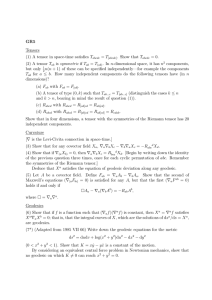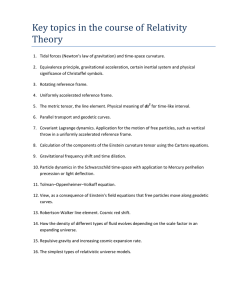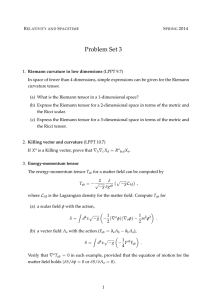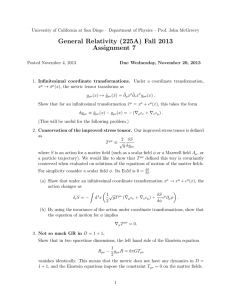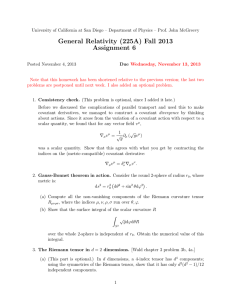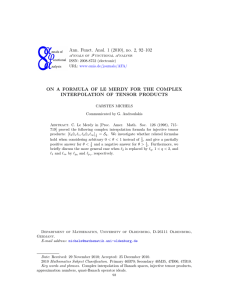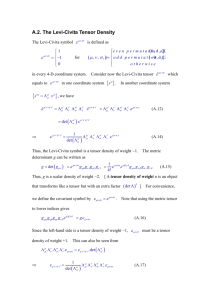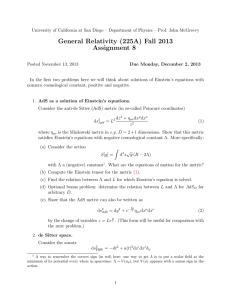Properties of Curvature
advertisement
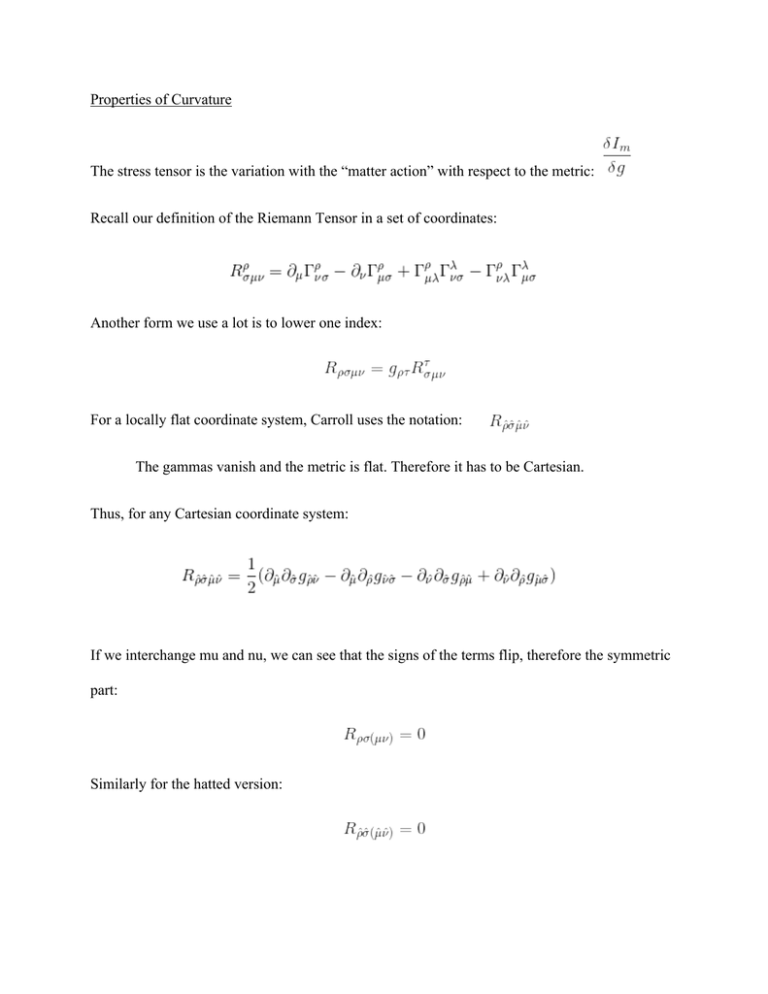
Properties of Curvature The stress tensor is the variation with the “matter action” with respect to the metric: Recall our definition of the Riemann Tensor in a set of coordinates: Another form we use a lot is to lower one index: For a locally flat coordinate system, Carroll uses the notation: The gammas vanish and the metric is flat. Therefore it has to be Cartesian. Thus, for any Cartesian coordinate system: If we interchange mu and nu, we can see that the signs of the terms flip, therefore the symmetric part: Similarly for the hatted version: What happens if we interchange sigma and rho? These relations should be true in any coordinate system: Now, by looking at the second derivatives of the metric and their respective signs, we can see: Cyclically reordering these, we notice by sign changes that: Also, for the anti-symmetric parts: The conditions above also lead to: The remaining n-independent degrees of freedom is not n4 but rather ( n = # of dimensions) So for: n=2 N2 = 1 n=3 N3 = 6 n=4 Next, we wish to look at: N4 = 20 . In this local coordinate system: This is called the Bianchi Identity. This is similar to the Jacobi Identity: Suppose we contract with : We can define the Riemann Tensor with index down in terms of these partial derivatives. Next, let’s look at the symmetric and antisymmetric part. Take the Riemann Tensor and Contract the 1st and 3rd: This is symmetric. It is called the Ricci Tensor. Another contraction, called the Ricci Scalar, is: We define the completely anti-symmetric part to be: Subtract all the parts with contractions on in C. All possible contractions are zero. It has all of the symmetries of Next, look at the following contraction: For, Then, Where is the Einstein Tensor. The Einstein Equation will be: . Also, Where each side of the equation equals 0. The Action Principle for Gravity is: Recall that we’ve written the Action Principle for a point particle: In order to be able to couple this to the Einstein Equations, we have to add two pieces: Find that solves the Geodesic Equation. Solve for . Then this has support when the orbit we choose is the geodesic. (True no matter what the volume element is)

